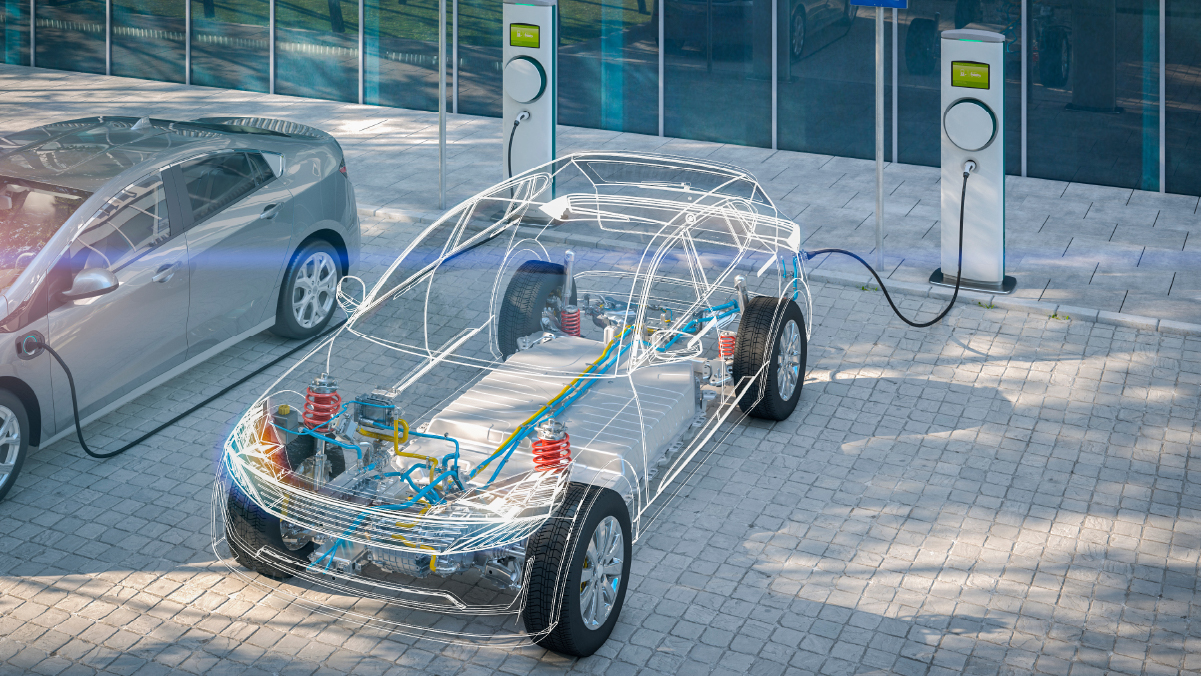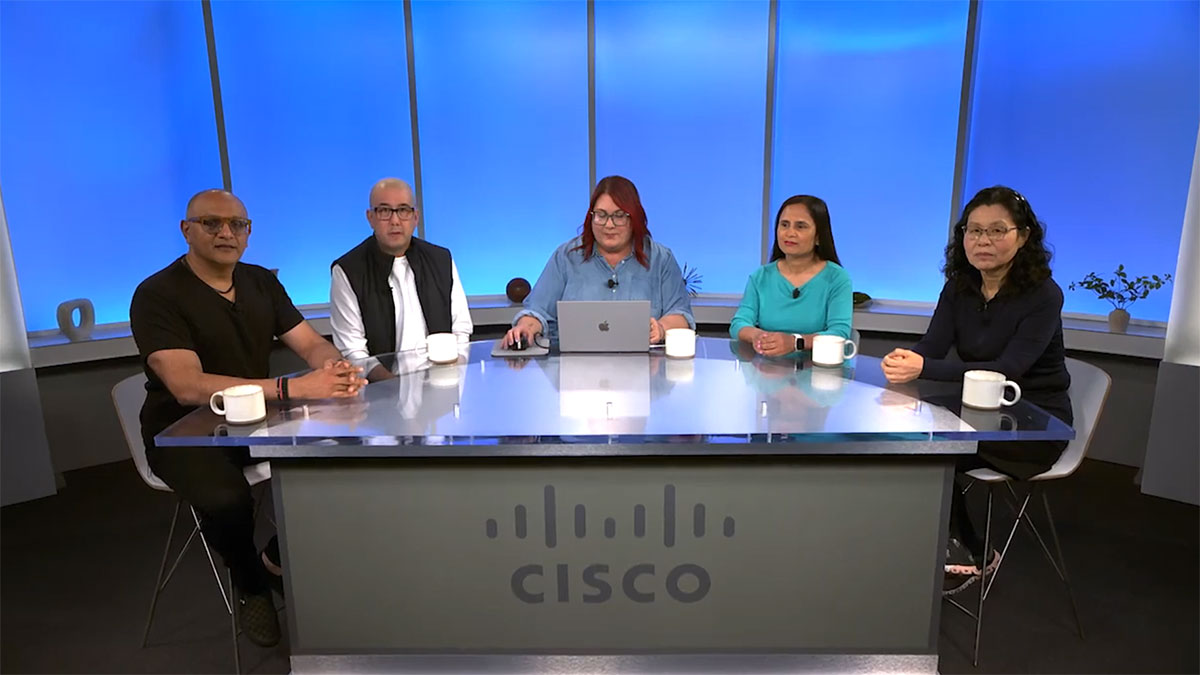Cisco is taking the lead in creating network technologies required for the future of mobility, but we know one company can’t do it alone. That’s why we partner with and empower experts and innovators across transport industries like Cenex and Smart Mobility Living Labs.
We live in a deeply transformative time for how networks connect and communicate.
From the challenges of intelligently and reliably connecting autonomous vehicles with multiple different infrastructures to intelligently and eco-consciously redistributing power across the energy grid, Cisco is taking the lead in creating network innovations that can seamlessly connect everything that moves.
Electric and Autonomous: The New Vehicle Networks on the Road Ahead
Whether it’s an electric vehicle accurately predicting when it needs its next charge, or an autonomous vehicle knowing what obstacles lie unseen beyond the next right turn, modern cars, trucks, and other forms of mobility rely on increasingly advanced embedded computer systems to operate.
Ensuring these vehicles all work efficiently and in harmony requires advanced communications with the outside world. This creates a new demand for broad compatibility between networks vehicles use to communicate with each other and local infrastructures.
“We need to develop standards. We’re sort of in the wild west of all of the various technologies; and all of the various applications that are going into these vehicles are creating real challenges,” said Matt Price, Cisco VP of Subscriber and Engineering Mobility.
“We need standards so that vehicles can talk to charging stations consistently across the country and across manufacturers and we can talk to various cloud solutions to interact with traffic and intersections. These are some of the big issues we’re overcoming.”
Cenex and Cisco Intelligently Redistribute Electric Vehicle Power
Cenex is the UK’s Centre of Excellence for Low Carbon and Fuel Cell technologies. An independent, non-profit research and technical consultancy, who workon decarbonizing transport; looking at how people and goods move, and exploring smart ways to enable zero-carbon mobility solutions. A significant part of their work is advising councils, companies, charities and countries on new forms of charging and the impact of electric vehicles on energy infrastructures.
When everyone has an electric vehicle, energy grids will have to adapt to distribute power to where it has the optimal impact. Where power is needed, and how much, will change dramatically between 7:00 A.M. on a Monday versus 5:00 P.M. on a Friday. Demand shifts put a strain on power grids trying to keep up with where energy needs to be sent and stored.
One way Cenex has worked to solve power dilemmas is through Cisco’s E-Flex program. A Vehicle-to-Grid (V2G) technology, E-Flex moves excess power stored in unused and idle vehicles back into the wider grid. That power can then be directed where it’s needed most, lowering strain on power infrastructure and making better use of stored energy that goes otherwise unused.
“Cenex was delighted to work in partnership with Cisco because it gave us a chance to connect with a global technology giant that has such a range of interests and activities and bring that to bear on this particular project, E-Flex,” said Chris Rimmer.
“It seems to me that Innovation is always a collaborative activity,” Mr. Rimmer continued. “It's very rare for one person, perhaps individual geniuses to come up with something brilliant. But even that idea needs to be put into action and that requires a range of skill sets … it’s very much a partnership and collaborative activity in that way.”
The Smart Mobility Living Lab and Cisco Develop People-Driven Mobility Solutions
A real-world innovation testbed located in East London, the Smart Mobility Living Lab provides organizations with an environment for testing and analysing new connected mobility technologies.
SMLL works with companies of every size to understand how new tech in the mobility ecosystem is evolving and what role it can play in future transport systems. Their work explores a wide variety of solutions, like how using sensors on roadside equipment can better inform autonomous vehicles, or how poor GPS coverage impacts populations in the real world. Their work helps businesses understand and test the levels of innovation they can implement, and examine those innovations to better understand the impact on real people and places.
Cisco was proud to serve as the lead industry partner in creating the testbed on the actual streets of London, making significant contributions to the technical design of the infrastructure.
“We have thousands of pieces of Cisco equipment within our monitoring network. So whether that's in the data centers, the roadside infrastructure…and that's looking at the in-vehicle technologies as well,” said James Long, Head of Technical Consulting at Smart Mobility Living Lab.
“The concept was to create a modular network capability. It was intended to be flexible and scalable. And most importantly it means that we can evolve the features and functionality of the testbed over time, adapting to the changing needs of clients who come to validate their innovations at the testbed.’”
Creating Innovative Network Solutions from the Outside-In
Driving successful innovation with the potential global impact of networked mobility demands a keen focus on the problems experienced by the public. In this case, the diverse needs of people outside a company should remain at the heart of the scalable solutions being developed inside.
As Mr. Long shared, “I'm sincerely hopeful that we will see a lot more pull from what users need. Rather than saying, ‘I've got a shiny new solution’, but actually how do we start to inform that solution by what a user is looking for? What do policymakers need? What places do we want?”
Cisco has a policy of putting our customer’s biggest challenges first, working with businesses and partners to overcome those challenges in innovative ways. Combining the top minds in network engineering and a global enterprise network, we continue a long history of helping customers create new experiences and solutions like never before.
“We've, we've been around for 37 years now. So we've done so much together. If you go back in time, [Cisco] helped create a scalable internet way back in the day,” said Jonathan Davidson, EVP and General Manager of Cisco Networking.
“We have transformed voiceover IP. Every time you use your phone, you're using a voiceover IP, but this didn't exist 24 years ago. We’ve been critical in making cable networks become internet and not just video networks. And so the company did a lot to invent these core critical technologies that we use today that we just take for granted. And what's exciting is that we're going to keep creating these new technologies. And that's what is really cool a about Cisco.”
For related content, visit https://blogs.cisco.com/innovation.




